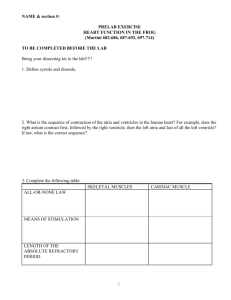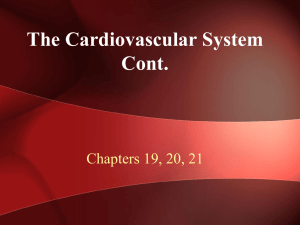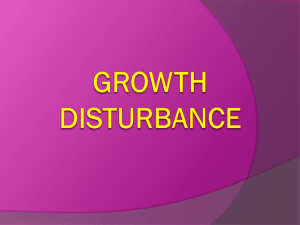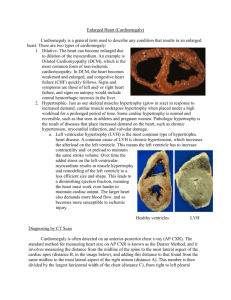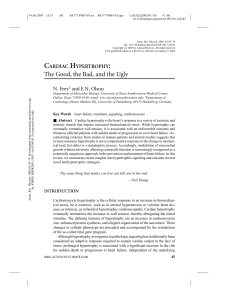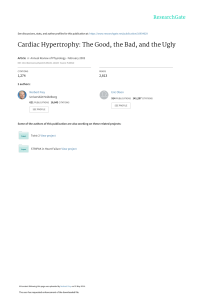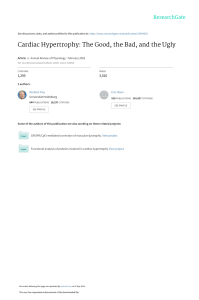June 25, 2008 Joanna, Lorna, Andria Left Ventricular Hypertrophy
advertisement
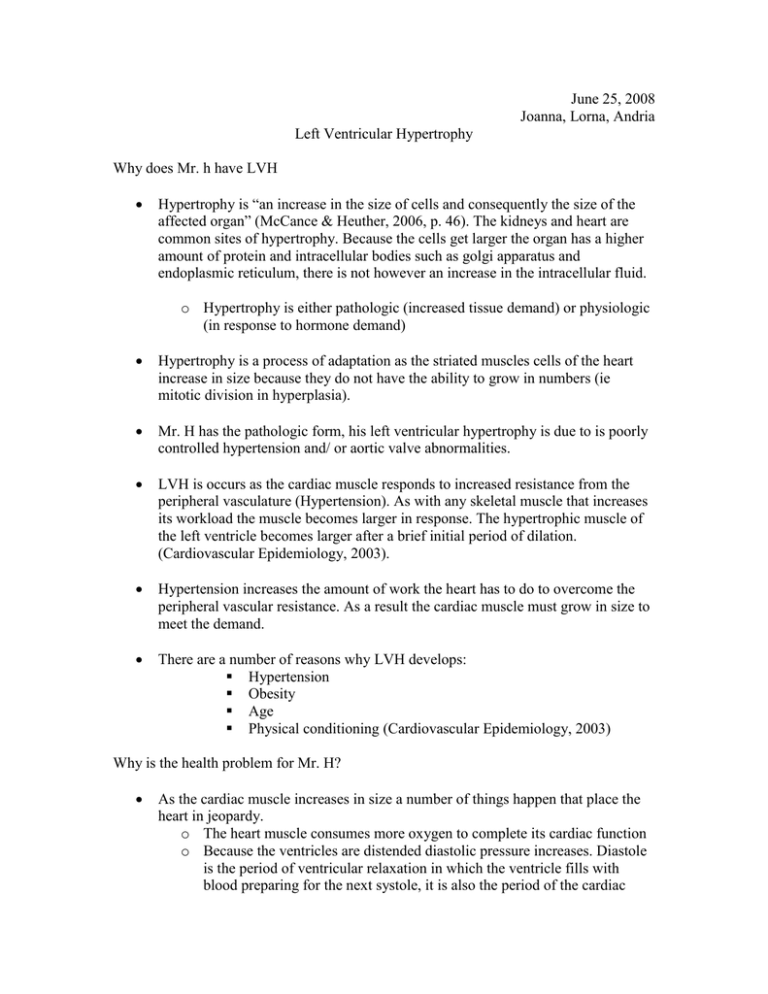
June 25, 2008 Joanna, Lorna, Andria Left Ventricular Hypertrophy Why does Mr. h have LVH Hypertrophy is “an increase in the size of cells and consequently the size of the affected organ” (McCance & Heuther, 2006, p. 46). The kidneys and heart are common sites of hypertrophy. Because the cells get larger the organ has a higher amount of protein and intracellular bodies such as golgi apparatus and endoplasmic reticulum, there is not however an increase in the intracellular fluid. o Hypertrophy is either pathologic (increased tissue demand) or physiologic (in response to hormone demand) Hypertrophy is a process of adaptation as the striated muscles cells of the heart increase in size because they do not have the ability to grow in numbers (ie mitotic division in hyperplasia). Mr. H has the pathologic form, his left ventricular hypertrophy is due to is poorly controlled hypertension and/ or aortic valve abnormalities. LVH is occurs as the cardiac muscle responds to increased resistance from the peripheral vasculature (Hypertension). As with any skeletal muscle that increases its workload the muscle becomes larger in response. The hypertrophic muscle of the left ventricle becomes larger after a brief initial period of dilation. (Cardiovascular Epidemiology, 2003). Hypertension increases the amount of work the heart has to do to overcome the peripheral vascular resistance. As a result the cardiac muscle must grow in size to meet the demand. There are a number of reasons why LVH develops: Hypertension Obesity Age Physical conditioning (Cardiovascular Epidemiology, 2003) Why is the health problem for Mr. H? As the cardiac muscle increases in size a number of things happen that place the heart in jeopardy. o The heart muscle consumes more oxygen to complete its cardiac function o Because the ventricles are distended diastolic pressure increases. Diastole is the period of ventricular relaxation in which the ventricle fills with blood preparing for the next systole, it is also the period of the cardiac cycle in which oxygenated blood fuels the cardiac muscle. If this diastole occurs in a heart that has high left ventricular end diastolic pressure, less blood fills the ventricle during diastole (decreased stroke volume) and less blood circulates to the cardiac muscle. The cardiac muscle works harder to oxygenate the body with less opportunity to oxygenate itself. What signs and symptoms might we see? Mr. H may report (Mayo Clinic, 2008) o Chest pain o Dizziness o Fainting o Rapid Exhaustion with physical activity o Palpitations Physical exam may reveal: o Increased BP o Obesity o If it is due to valvular abnormalities such as mitral valve regurgitation you may auscultate an S3 murmur. If it is related to aortic stenosis then you may hear a crescendo murmur at the 3rd intercostal space on the right sternal boarder. PMI (point of maximal impulse) which should be 2 finger width lateral of the mid-clavicular line Left side of chest. (Karen Then, 2008), any other bruis auscultated on assessment indicate arteosclerosis and could denote LVH. Diagnostic exams: (Chan, 2002) o ECG: Inconclusive but may demonstrate pseudoinfarction patterns(can be one of many other conditions) o Echocardiogram demonstrating ventricular wall > 2cm thick o MRI o CT o CXR Cardiovascular Epidemiology (2003) Left Ventricular Hypertrophy. University of Southern California. Retrieved from http://www.musc.edu/bmt737/Spr_1999/russell/general.html On June 24, 2008. Site last updated 2003. Chan, E., Tereada, L., Koortbeek, J., & Winston, B. (2002). Bedside critical care manual. Hanley & Belfus, Inc, Philedelphia. Mayo Clinic (2008). Heart disease: Left Ventricular Hypertrophy. Retrieved from http://www.mayoclinic.com/health/left-ventricularhypertrophy/DS00680/DSECTION=symptoms on June 25, 2008. McCance, K., & Heuther, S. (2006). Pathophysiology: the Biologic Basis for Disease in Adults and Children. Elsivier Mosby. Then, Karen. (2008) Countless hours of duming cardiac assessment into my head!

